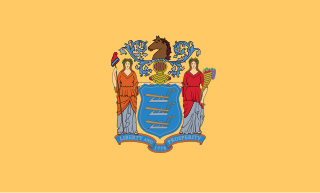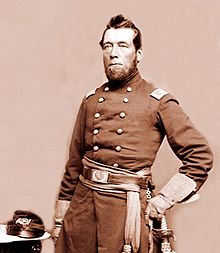
Elmwood Park is a borough in Bergen County, in the U.S. state of New Jersey, and is a bedroom suburb located 14 miles (23 km) from New York City. As of the 2020 United States census, the borough's population was 21,422, an increase of 2,019 (+10.4%) from the 2010 census count of 19,403, which in turn reflected an increase of 478 (+2.5%) from the 18,925 counted in the 2000 census.

Fair Lawn is a borough in Bergen County, in the U.S. state of New Jersey, and a bedroom suburb located 12 miles (19 km) northwest of New York City. As of the 2020 United States census, the borough's population was 34,927, an increase of 2,470 (+7.6%) from the 2010 census count of 32,457, which in turn reflected an increase of 820 (+2.6%) from the 31,637 counted in the 2000 census.

Paterson is the largest city in and the county seat of Passaic County, in the U.S. state of New Jersey. As of the 2020 United States census, Paterson was the state's third-most-populous municipality, with a population of 159,732. an increase of 13,533 (+9.3%) from the 2010 census count of 146,199, which in turn reflected a decline of 3,023 (-2.0%) from the 149,222 counted in the 2000 census. The Census Bureau's Population Estimates Program calculated a population of 156,452 for 2023, making it the 168th-most populous municipality in the nation.

The New York City draft riots, sometimes referred to as the Manhattan draft riots and known at the time as Draft Week, were violent disturbances in Lower Manhattan, widely regarded as the culmination of working-class discontent with new laws passed by Congress that year to draft men to fight in the ongoing American Civil War. The riots remain the largest civil urban disturbance in American history. According to Toby Joyce, the riot represented a "civil war" within the city's Irish community, in that "mostly Irish American rioters confronted police, [while] soldiers, and pro-war politicians ... were also to a considerable extent from the local Irish immigrant community."

United States Colored Troops (USCT) were Union Army regiments during the American Civil War that primarily comprised African Americans, with soldiers from other ethnic groups also serving in USCT units. Established in response to a demand for more units from Union Army commanders, USCT regiments, which numbered 175 in total by the end of the war in 1865, constituted about one-tenth of the manpower of the army, according to historian Kelly Mezurek, author of For Their Own Cause: The 27th United States Colored Troops. "They served in infantry, artillery, and cavalry." Approximately 20 percent of USCT soldiers were killed in action or died of disease and other causes, a rate about 35 percent higher than that of white Union troops. Numerous USCT soldiers fought with distinction, with 16 receiving the Medal of Honor. The USCT regiments were precursors to the Buffalo Soldier units which fought in the American Indian Wars.

New Jersey in the nineteenth century led the United States into the Industrial Revolution. The state sent soldiers, supplies and money to the wars of the period but was not the location of any battles.

The 25th Infantry Regiment was an infantry regiment of the United States Army activated in 1866 and deactivated in 1957. One of the "Buffalo Soldier" units, the racially segregated regiment saw action during the American Indian Wars, Spanish–American War, Philippine–American War and World War II.

George Childs Burling was a United States Union Army officer during the American Civil War, serving mostly as colonel and commander of the 6th New Jersey Volunteer Infantry. Burling was born in Burlington County, New Jersey, raised on his father's farm and educated at a private school in Norristown, Pennsylvania. He was a coal merchant and a militia officer before the war. Burling's militia company was mustered into the volunteer service for a three-month term in July 1861, but it became company F of the 6th New Jersey with a three-year enlistment on September 9, 1861. Burling became the regiment's major on March 19, 1862, and lieutenant colonel on May 7 of that year. Burling was wounded at the Second Battle of Bull Run in August 1862.

Edward Burd Grubb Jr. was a Union Army colonel and regimental commander in the American Civil War. He served in three regiments and commanded two of them. In recognition of his service, in 1866, he was nominated and confirmed for appointment to the grade of brevet brigadier general of volunteers, to rank from March 13, 1865. He was later appointed by President Benjamin Harrison as United States Ambassador to Spain. He was also a noted foundryman, business owner and New Jersey politician who was close to Woodrow Wilson.

The state of New Jersey in the United States provided a source of troops, equipment and leaders for the Union during the American Civil War. Though no major battles were fought in New Jersey, soldiers and volunteers from New Jersey played an important part in the war, including Philip Kearny and George B. McClellan, who led the Army of the Potomac early in the Civil War and unsuccessfully ran for President of the United States in 1864 against his former commander-in-chief, Abraham Lincoln.

Eastside Park is a residential neighborhood in the Eastside of Paterson, New Jersey. The Eastside Park section of the city is generally defined as the area of the city bordered by Vreeland Avenue and East 33rd Street to the west, 20th Avenue to the south, McLean Boulevard to the east, and Martin Luther King, Jr. Way (Broadway) to the north. The Eastside Park section is delineated from the Manor section of the city by Broadway, which becomes Route 4 before crossing the Passaic River into Elmwood Park in Bergen County.
The 75th Ohio Infantry Regiment, sometimes 75th Ohio Volunteer Infantry was an infantry regiment from southwestern Ohio in the Union Army during the American Civil War. It served in the Eastern Theater, most notably in the battles of Chancellorsville and Gettysburg and then in the siege operations against Charleston, South Carolina.

The Passaic–Bergen–Hudson Transit Project is a project under study by NJ Transit to reintroduce passenger service on a portion of the New York, Susquehanna and Western Railway (NYSW) right-of-way (ROW) in Passaic, Bergen and Hudson counties using newly built, FRA-compliant diesel multiple unit rail cars. Plans call for service to run from Hawthorne south through Paterson, east to Hackensack and then southeast to North Bergen, where it would join the Hudson-Bergen Light Rail (HBLR).

The Vreeland House is a historic stone house located at 125 Lakeview Avenue in the borough of Leonia in Bergen County, New Jersey, United States. The house was built in 1786 by Dirck Vreeland. His son Michael D. Vreeland, added the main Dutch style wing of the house in 1815. The house remained in the Vreeland family until 1928. It was documented by the Historic American Buildings Survey (HABS) in 1936. The house was added to the National Register of Historic Places on November 17, 1978, for its significance in architecture and exploration/settlement. It was listed as part of the Early Stone Houses of Bergen County Multiple Property Submission (MPS).

Charles Alling Gifford was an American architect and a partner in the New York City firm of Gifford & Bates. He is best remembered for his resort hotels, but also designed houses, churches, and five armories for the New Jersey National Guard.
The 25th New Jersey Infantry Regiment was an American Civil War infantry regiment from New Jersey that served a nine-month enlistment in the Union Army.

Vreeland Avenue was a railroad station in Paterson, New Jersey served by the New York, Susquehanna and Western Railroad (NYS&W). until 1966. Service by the New Jersey Midland, a predecessor to the NYS&W, had begun in 1873. The station house dates to 1949. Other extant station buildings from the New Jersey Midland/NYSW can be found at Wortendyke, Butler, and Newfoundland, among other places.

Eastside Park is a park located in Paterson, New Jersey. The park is bordered by Martin Luther King, Jr. Way (Broadway) to the north, McLean Boulevard to the east, Park Avenue to the south, and Derrom Avenue to the west. Eastside Park is the cornerstone of the Eastside Park Historic District, a state and nationally registered historic place added to the National Register of Historic Places on July 7, 2004.

Abraham Godwin was a representative in the New Jersey General Assembly, former fife major in the American Revolutionary War, and brigadier general during the War of 1812.

The Islamic Center of Passaic County is a mosque and Islamic cultural center in Paterson, New Jersey, located on Derrom Ave. It is one of the largest mosques in New Jersey.

















